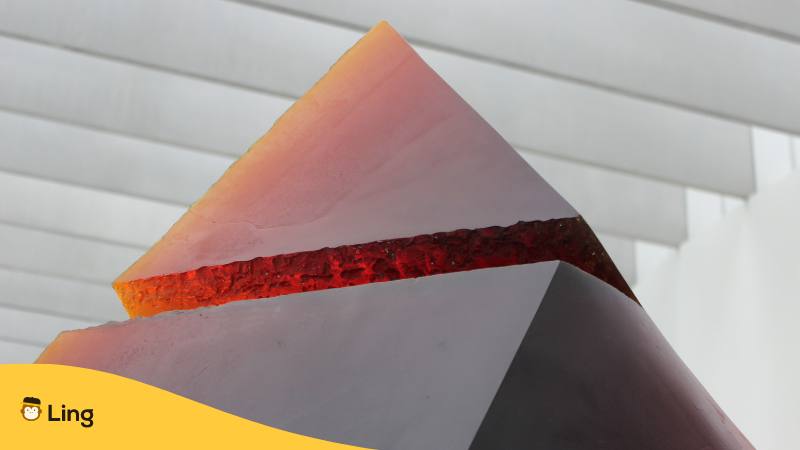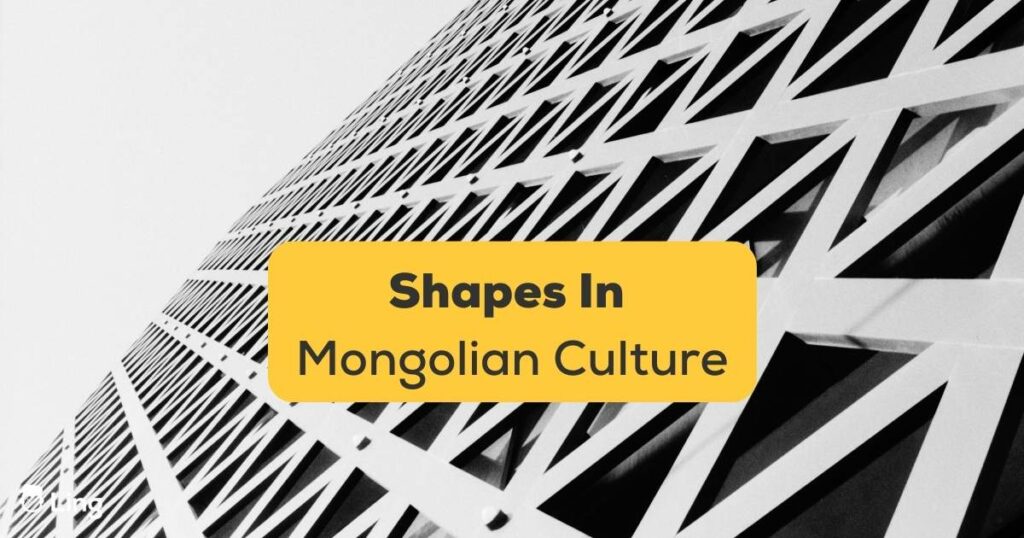Mongolian, a language that rolls off the tongue with its unique sounds and intonations, is spoken by more than 5 million people. Its roots lie in the vast Mongolian plains, but its influence extends far beyond borders, spreading to countries such as China, Russia, and beyond. With its own distinct writing system, phonetics, and grammar, the Mongolian language serves as a cornerstone of communication and cultural identity for the Mongolian people.
In the Mongolian language, words alone are not always enough to convey a message. That is where shapes come into play. Shapes have the power to emphasize certain ideas, convey meanings, and add aesthetic value to communication. Through this article, we will delve into the vital role of shapes in Mongolian culture.
Our purpose here is to provide readers with a window into the Mongolian language, an understanding of the significance of shapes in communication, and an appreciation of the value of shapes in Mongolian culture. We will take a closer look at commonly used shapes in the Mongolian language, explore their symbolic meanings within Mongolian culture, and observe their use in Mongolian art and crafts.
By the end of this article, readers will have a deeper understanding of the Mongolian language, its culture, and the vital importance of shapes in both communication and art. This newfound knowledge has the potential to bridge cross-cultural gaps and broaden horizons, leading to a greater appreciation of the diversity of human expression.
Shapes In Mongolian

Shapes in the Mongolian language are more than just geometrical figures; they are a fundamental aspect of communication that reflects the unique character and identity of Mongolian culture. From the sweeping expanses of the Gobi Desert to the rugged terrain of the Altai Mountains, shapes are used to convey the essence of the natural world that surrounds the Mongolian people.
The use of shapes in the Mongolian language is a testament to the profound connection between the written word and the cultural context in which it is used. Whether it’s the intricate patterns of traditional textiles or the elaborate designs of yurt decorations, shapes are woven into the fabric of everyday life in Mongolia.
As you explore the world of Mongolian shapes, you’ll discover a rich tapestry of symbolism and meaning. The circle represents the unity of the Mongolian people, while the square embodies stability and balance. The triangle signifies the ever-changing nature of life, while the diamond symbolizes wealth and power.
Each shape in the Mongolian language is infused with cultural significance, revealing insights into the values, beliefs, and aspirations of the Mongolian people. Whether you’re studying the Cyrillic or Traditional Mongolian script, the use of shapes is an essential aspect of language that provides a window into the soul of a people.
The shapes used in the Mongolian language are more than mere symbols on a page; they are a living embodiment of a rich and vibrant culture. From the nomadic herders of the steppes to the bustling cities of Ulaanbaatar and Hohhot, the shapes of the Mongolian language are an essential part of the fabric of life in this fascinating corner of the world.
Shapes are more than just mundane geometrical figures; they are the building blocks of our world. From the clothes we wear to the buildings we inhabit, shapes are everywhere around us. They represent the fundamental elements of design, allowing us to make sense of the world around us and express ourselves in creative ways.
In this section, we’ll delve into the fascinating world of shapes in the Mongolian language. By exploring the basic shapes and their meanings, we can gain a deeper understanding of Mongolian culture and communication.
| English | Mongolian | Romanization |
| Arrow | Сум | Sum |
| Circle | Тойрог | Toirog |
| Crescent | Хавирган сар | Khavirgan sar |
| Cross | Загалмай | Zagalmai |
| Cube | Шоо | Shoo |
| Cylinder | Цилиндр | Tsilindr |
| Decagon | Арван өнцөгт | Arvan öntsögt |
| Diamond | Алмаз | Almaz |
| Ellipse | Зууван | Zuuvan |
| Heart | Зүрх | Zürkh |
| Heptagon | Долоон өнцөгт | Doloon öntsögt |
| Hexagon | Зургаан өнцөгт | Zurgaan öntsögt |
| Minus | Хасах | Khasakh |
| Multiplication | Үржүүлэх | Ürjüülekh |
| Nonagon | Нонагон | Nonagon |
| Octagon | Октагон | Oktagon |
| Oval | Зууван | Zuuvan |
| Parallelogram | Параллелограмм | Parallyelogramm |
| Pentagon | Пентагон | Pyentagon |
| Plus | Дээрээс нь | Deerees ni |
| Rhombus | Ромб | Romb |
| Right Triangle | Зөв гурвалжин | Zöv gurvaljin |
| Ring | Бөгж | Bögj |
| Scalene Triangle | Скален гурвалжин | Skalyen gurvaljin |
| Semi-Circle | Хагас тойрог | Khagas toirog |
| Square | Дөрвөлжин | Dörvöljin |
| Star | Од | Od |
| Trapezoid | Трапец | Trapyets |
| Triangle | Гурвалжин | Gurvaljin |
What Each Shape Means As A Symbol
Shapes have woven their way into the fabric of Mongolian culture for centuries, each shape carrying a weighty symbolic meaning that holds deep significance. From the curve of traditional Mongolian architecture to the intricate designs on textiles, shapes have been used to convey important messages about Mongolian history, beliefs, and values.
The role of shapes in Mongolian culture is vast and varied, from their use in the realm of art and architecture to their presence in everyday life. Mongolians believe that shapes possess the ability to convey deep symbolic meanings that can communicate the very essence of their culture.
Take, for instance, the circle. This shape holds a special place in Mongolian culture as it represents the cyclical nature of life – the idea that life is a continuous cycle of birth, death, and rebirth. The circle also symbolizes the unity of the Mongolian people and their connection to the natural world, binding them to their rich cultural heritage.
Another shape with a rich symbolic meaning in Mongolian culture is the square. It embodies stability, order, and balance and often serves as a representation of the four elements – earth, water, air, and fire. The square is also used to symbolize the four cardinal directions, the four seasons, and the four sides of the Mongolian yurt.
The triangle, on the other hand, symbolizes change and progress in Mongolian culture. It is often used to represent the three natural elements – earth, water, and sky, and also signifies the upward movement toward spiritual enlightenment.
Moving on, the diamond represents power and wealth in Mongolian culture. This shape is frequently used in traditional Mongolian art and architecture, such as the design of the Mongolian flag, to embody the strength and resilience of the Mongolian people.
The rectangle is yet another shape that holds great importance in Mongolian culture. It embodies strength, durability, and foundation and is used to symbolize the walls of traditional Mongolian buildings and the bedrock of Mongolian society.
Finally, the oval represents femininity, motherhood, and the nurturing qualities of women in Mongolian culture. It is used to represent the yurt, a traditional Mongolian dwelling shaped like an oval, and the very essence of Mongolian hospitality.
In conclusion, shapes have been an integral part of Mongolian culture for centuries, with each shape carrying deep symbolic meaning and significance. Understanding the symbolic meanings of shapes in Mongolian culture can help to deepen one’s appreciation for the Mongolian people and their rich cultural heritage, allowing for a greater understanding of this beautiful and enigmatic land.
Learn Mongolian

Learning Mongolian with Ling can be an exciting and rewarding experience, especially when it comes to exploring the use of shapes in Mongolian culture.
By visiting Ling’s Mongolian course, you can learn about the different shapes used in Mongolian culture and their symbolic meanings. You’ll also find a table with pictures and words for each shape, making it easy to learn and remember. Whether you’re a language learner or just someone with a fascination for human expression, exploring Mongolian shapes with Ling is sure to be a fascinating journey.
So go ahead, download Ling today from the Play Store or App Store, and get ready to embark on the adventure of a lifetime!
If you’re interested in Mongolian culture and language, you can also check out our articles on Mongolian sentence structure and Mongolian shopping vocabulary.





























































